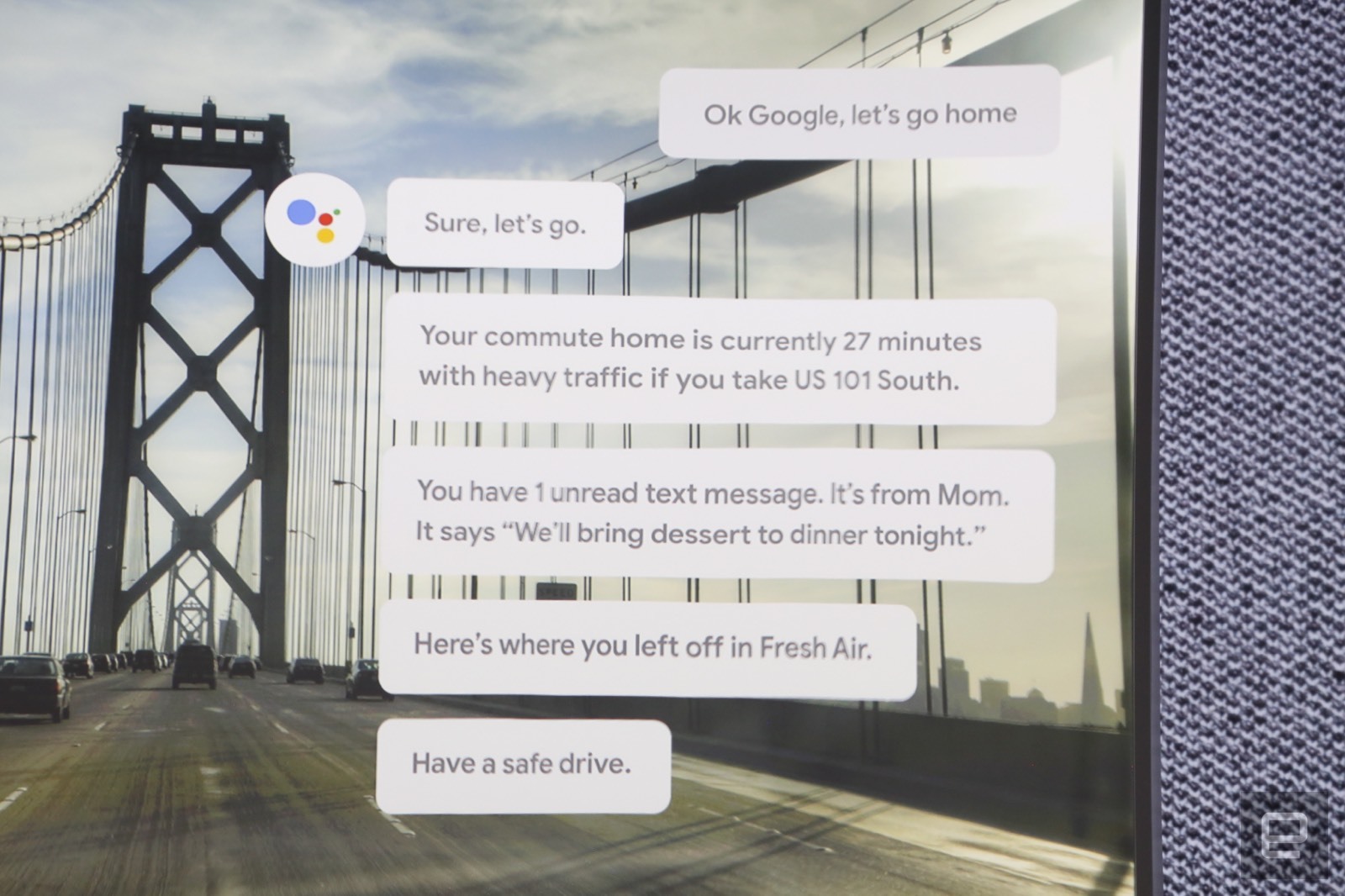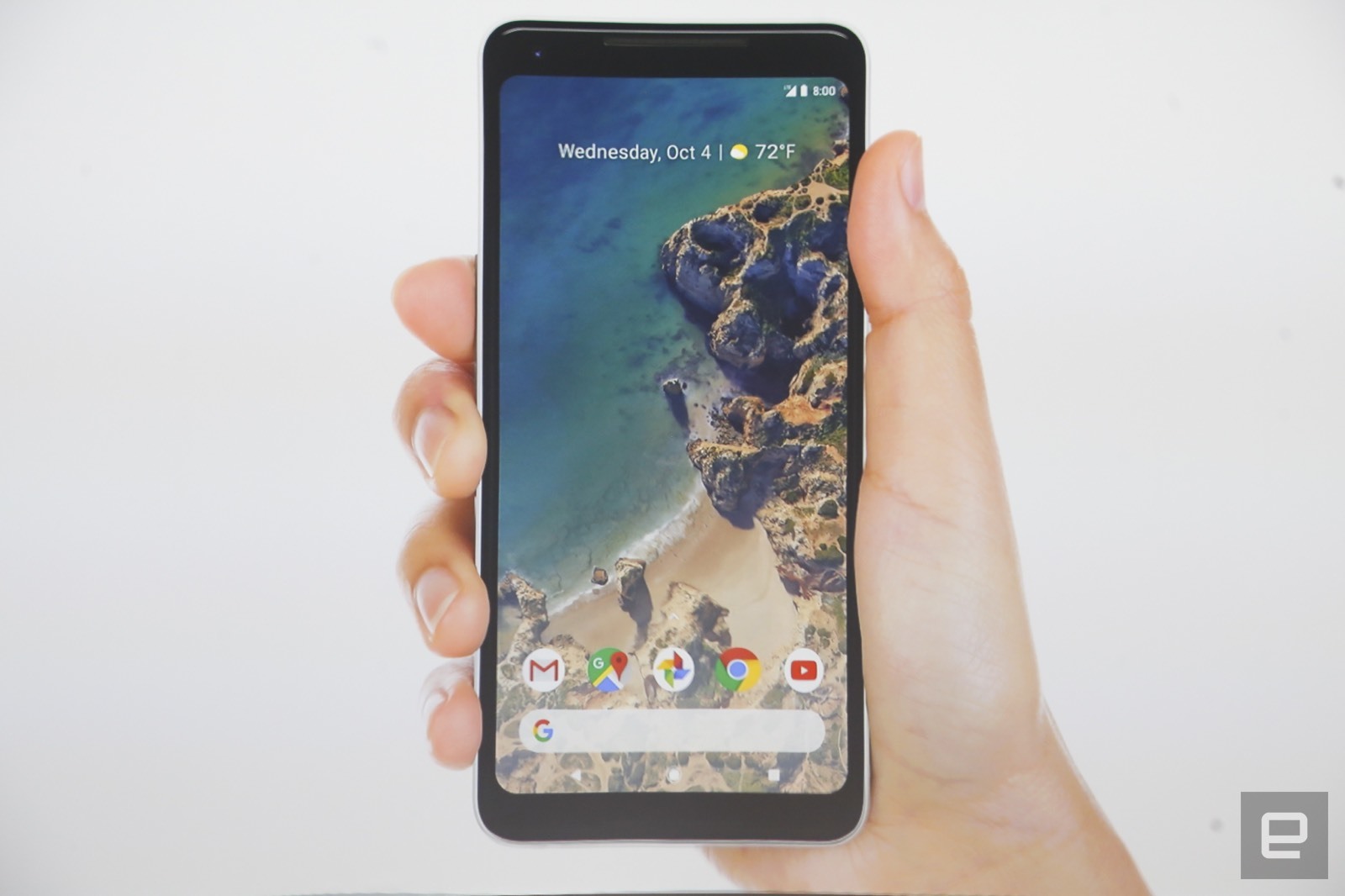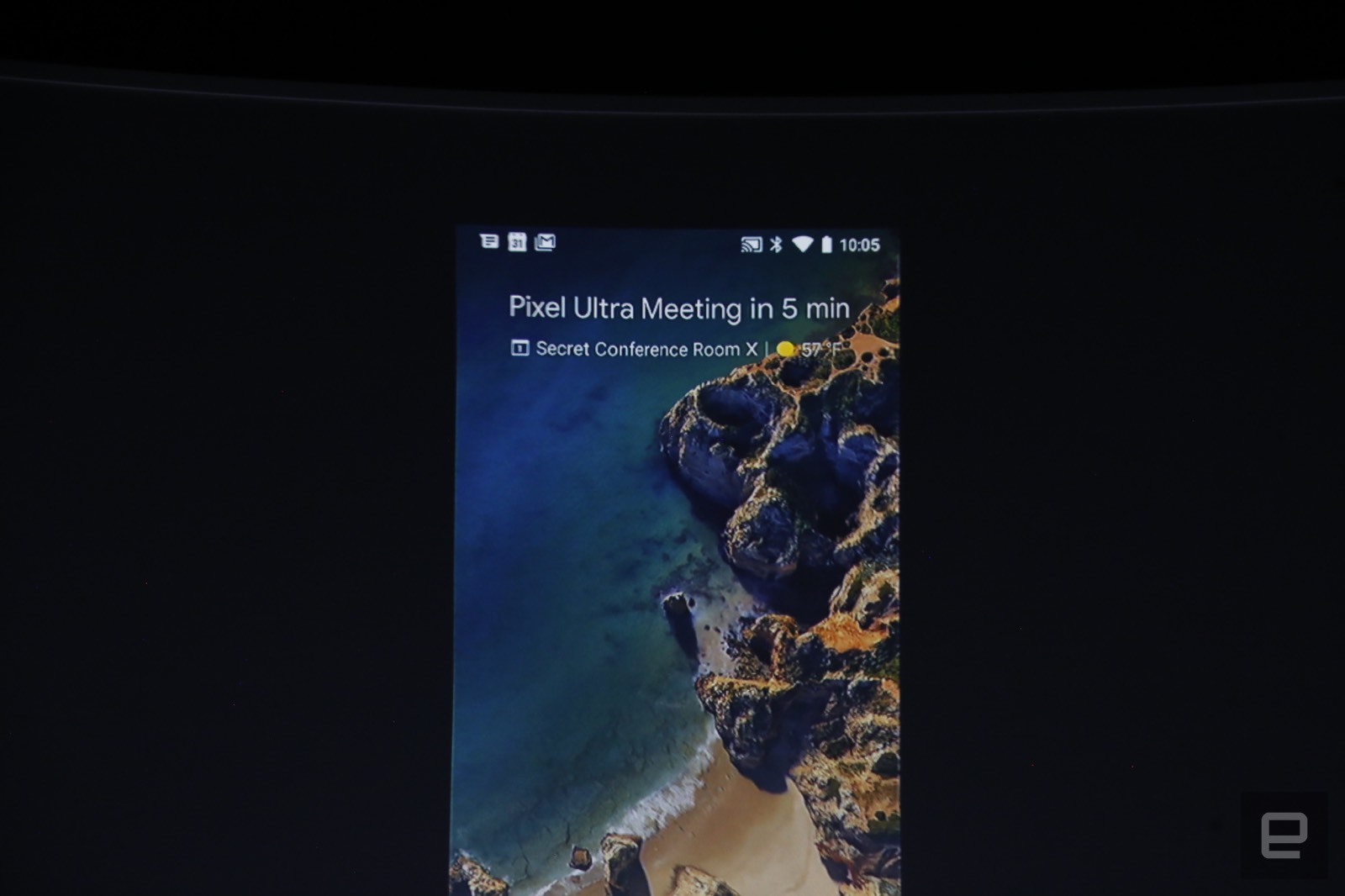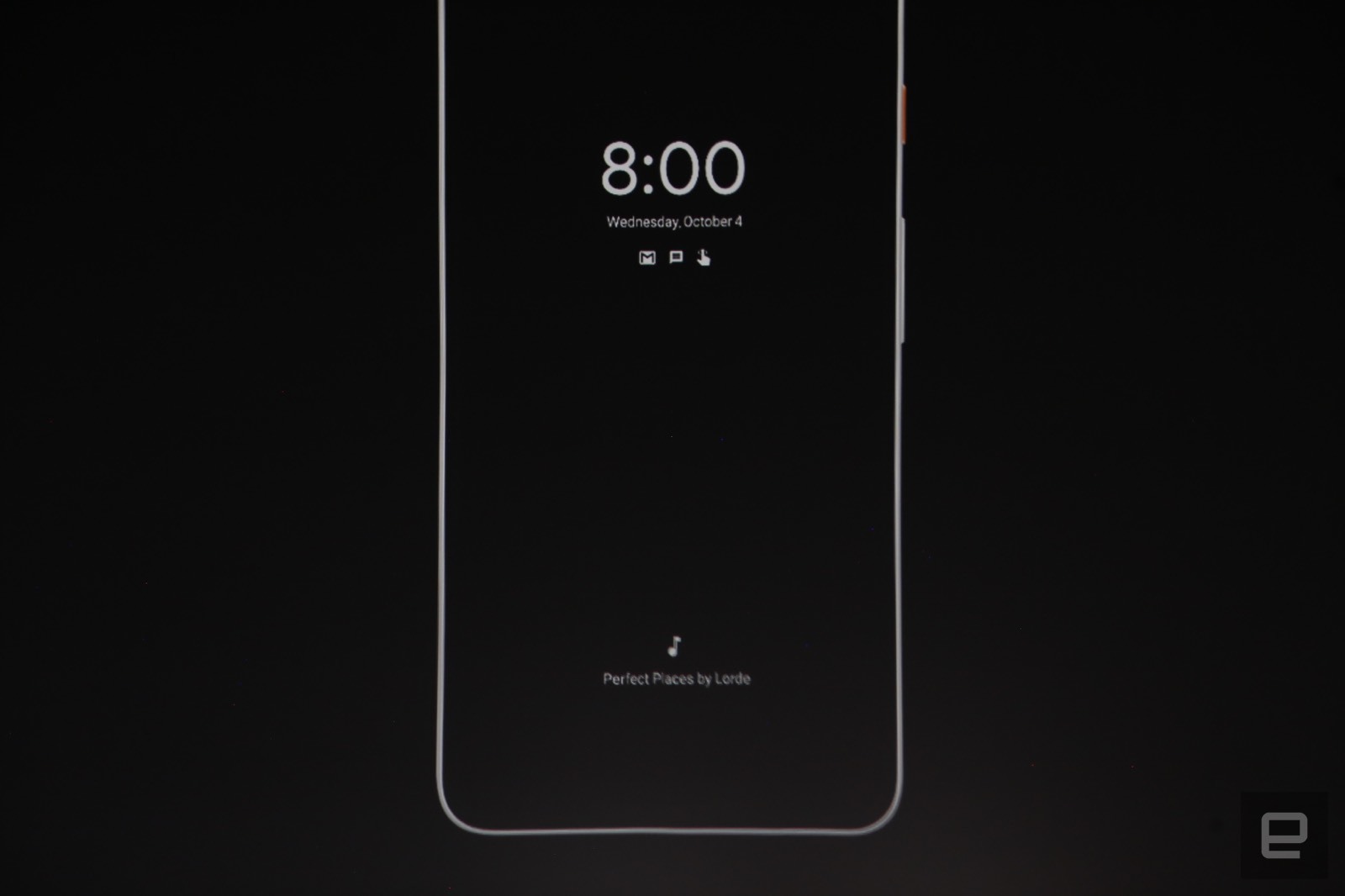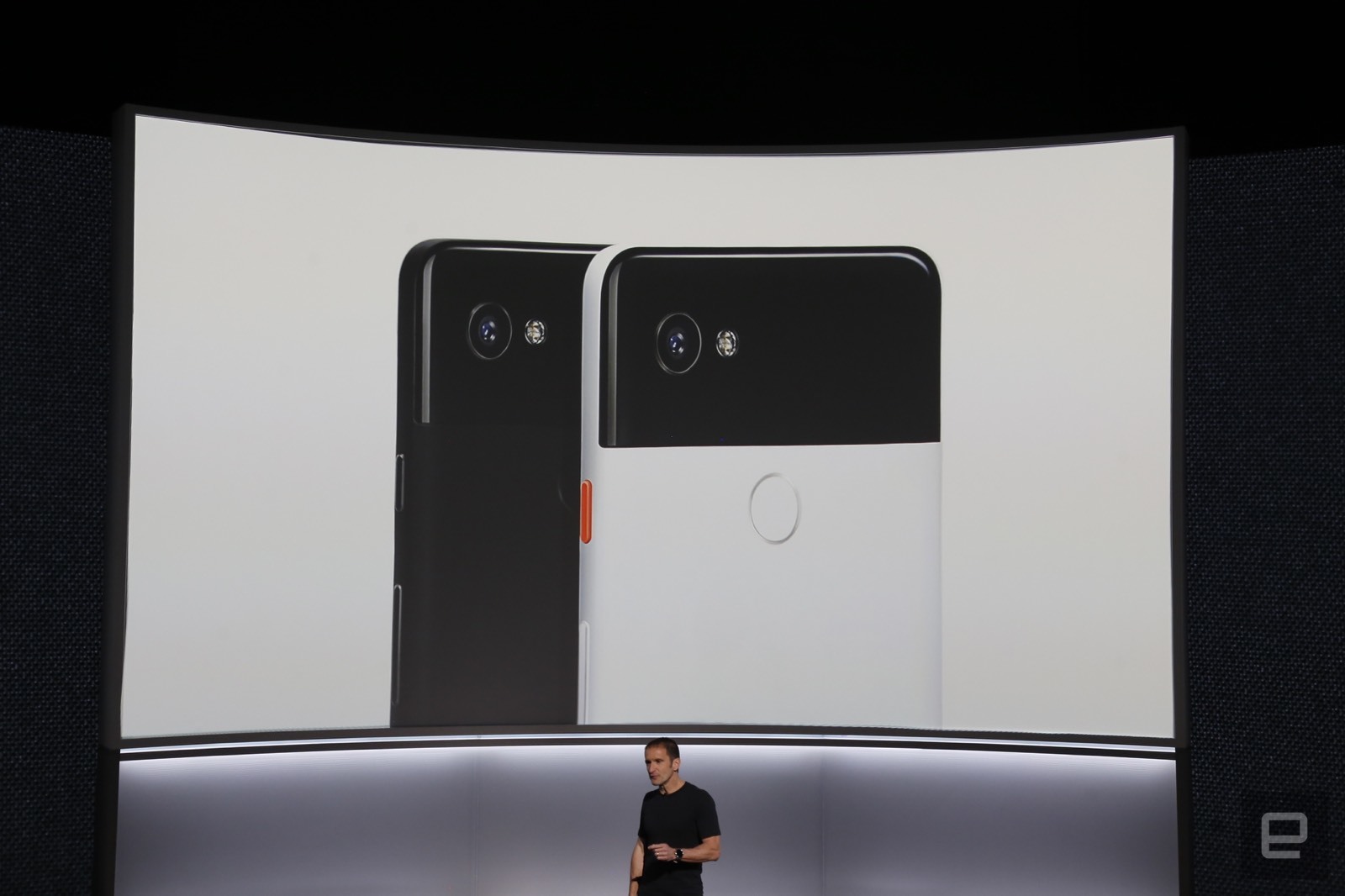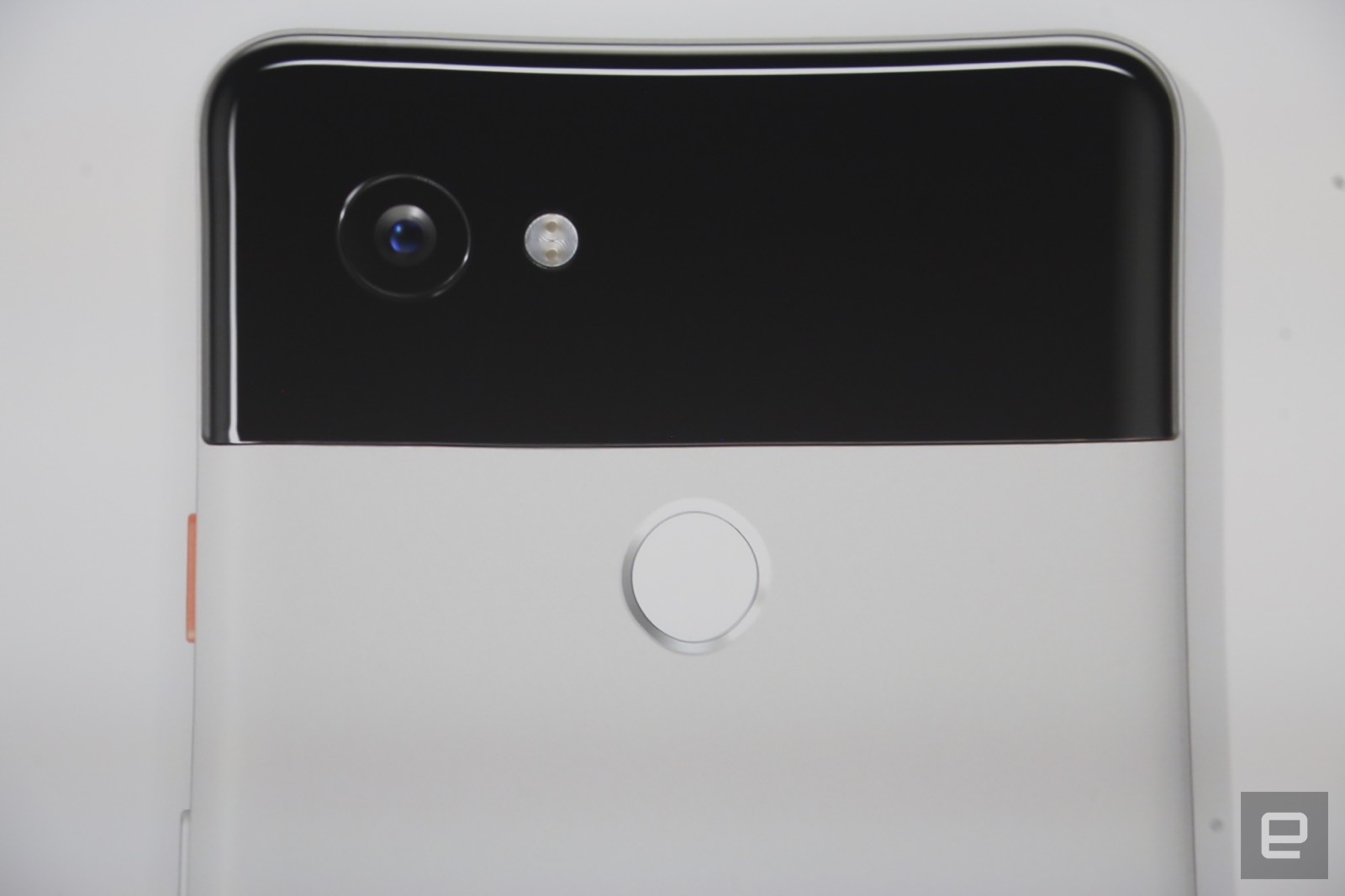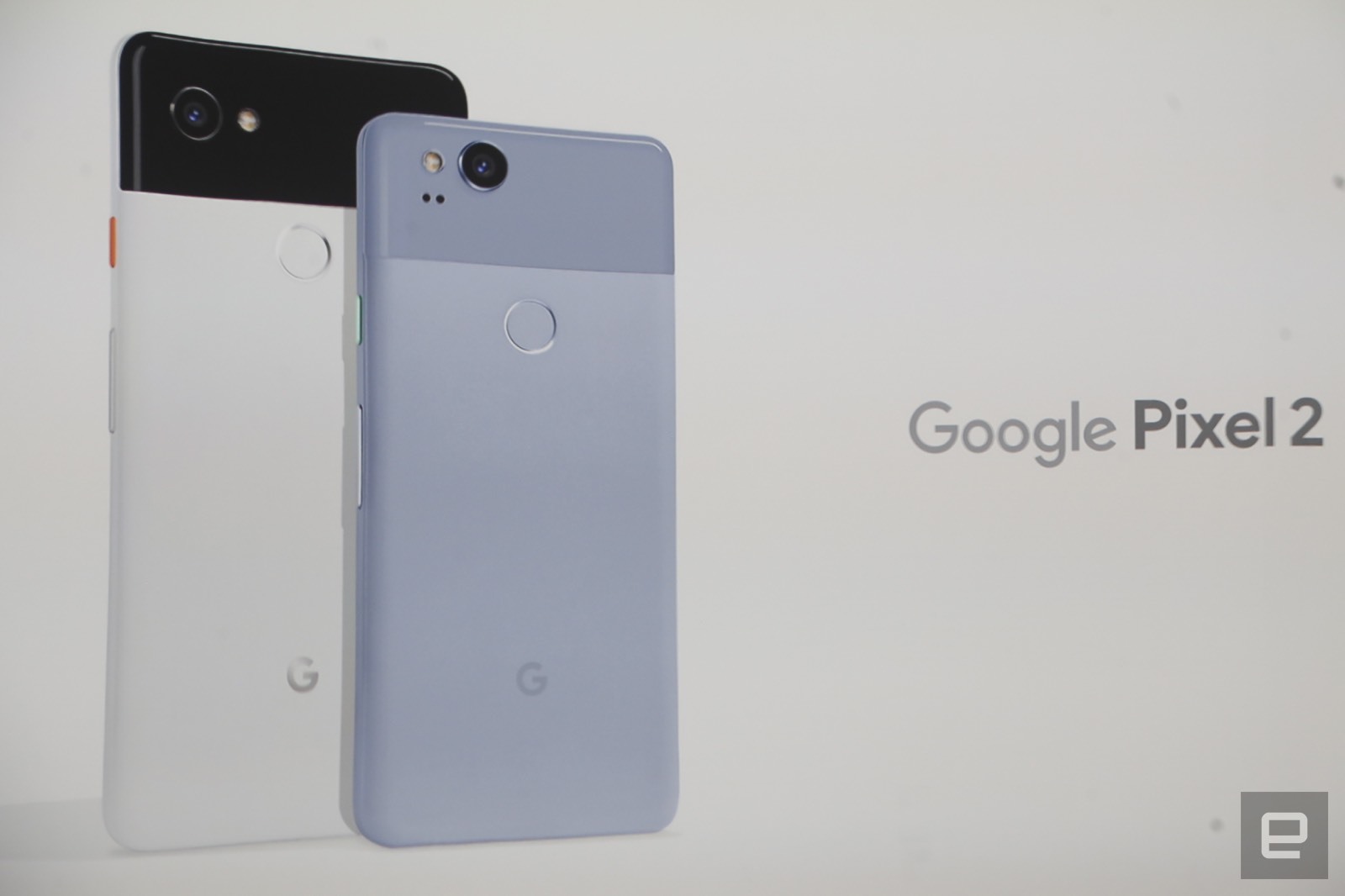Google has announced the second generation of its venerated Pixel handsets, the Pixel 2 and its larger sibling, the Pixel 2 XL. The former is shipping with a 1080p OLED display, while the latter is packing 6-inches, although the size is not the USP here. Instead, the company is pushing its refined hardware design with a bright pop of color on the power switch. In addition, Google has joined the cavalcade of others that have abandoned the 3.5mm headphone jack on its flagship smartphones — instead, users will need to connect their analog headphones using a bundled 3.5mm to USB-C adapter.
Google has made a big deal about the fact that there is feature parity between both handsets, a swipe at Apple — which saves more advanced camera features for the Plus version of the latest iPhone. One of which is the always-on display that, that will constantly show you the time and how many notifications you have. But one crucial difference is that the Pixels 2 will also have a persistent music-spotting feature like Shazam. Leave your phone on the table in a coffee shop, and it’ll always show you the name of the song that’s playing in the background.
The Pixel 2’s cameras are also getting an upgrade, with the company claiming that they have received a DxO benchmark score of 98. The handset gets a 12-megapixel lens with optical image stabilization that is paired with Google’s computational photography smarts. The company is also offering a portrait mode, albeit with a single lens, which is achieved with the aforementioned computational photography. That feature is also being offered on the front-facing camera, since it doesn’t require any additional hardware.
As for video, Google is using “fused video stabilization,” a method that combines optical stabilization with its digital equivalent for smoother shots. This has also enabled the company to add-in live photos to the litany of features available to Pixel 2 owners.
Company hardware chief Rick Osterloh also spoke about how the field for smartphone manufacturers has flattened considerably. After all, the components that go inside almost every Android device has become so commoditized that it’s hard to tell one from another. That’s why the new Pixels (alongside the rest of Google’s new products) are leaning hard on artificial intelligence and software as a unique selling point. Osterloh describes them as “radically helpful,” as a way to anticipate your needs and make your life easier.
Part of that initiative, as well as the always-on display, is a notification pane embedded into the home screen that informs you of important calendar appointments. Meanwhile, a Google search bar remains persistent at the bottom of the menu, enabling you to search both your phone and the web at the same time.
Similar to the HTC U11’s squeeze-sides feature, you can pinch the bezels of the Pixel 2 to summon Google Assistant. Another feature is summoning Assistant during your commute, simply by declaring that you’re about to drive home. The system will surface GPS directions, resuming a podcast or song that was played the last time you were in the car and read out instant messages.
Google received plenty of praise for the Pixel from everyone except the people who actually wanted to buy one. That’s because the company has struggled to produce enough devices to cope with demand, distressing many in the Android faithful. Back in April, Android Central opined that even six months after launch, would-be purchasers were left waiting weeks, or months, for a phone. Around the same time, PhoneArena described the device as “vaporware,” because of the long wait times. It was enough of a problem that Rick Osterloh even joked about it during his keynote, saying that he wished there were “more to go around.”
Between then and now, Google has, at least, bolstered its R&D division in the hope of making future devices more compelling. The company spent $1.1 billion on buying up HTC’s “Powered by HTC” arm that was, until recently, working on Pixel devices outside Google. It wouldn’t be unreasonable to hope that some of the new hires may have better experience of what’s required to get a phone out the door.
Of course, much of the potential surprise was spoiled, thanks to a fairly extensive series of leaks that have popped up over the last few months. Leaked images of the device showed a minimalist, stripped-down smartphone with a larger rear camera and thin bezels. Other rumors suggested that the handset would crib the squeezable sides that were found in HTC’s well-regarded U11 smartphone.
Shortly before the event itself kicked off, a spec list for the Pixel 2 XL was leaked by 9to5Mac, revealing plenty about the larger device. Like the fact that it would be packing a 2.35GHz Snapdragon 835 SoC, 4GB RAM and 64GB storage all nestled beneath a 6-inch, 2,880 x 1,440 P-OLED display coated with Gorilla Glass 5. The list, interestingly, mentioned Android 8.0, rather than 8.1 being shipped with the handset, not to mention the 3,520mAh battery nestled inside.
The Google Pixel 2 will ship in a trio of colors: Kinda Blue, Just Black and Clearly White while the XL is clad in either Just Black or Black and White. Pricing for the smaller device with 64GB memory begins at $649 while the XL will initially set you back $849. Pre-orders begin today, with every user who does pre-order getting a Google Home Mini as a sweetener, although we don’t know when these phones will actually ship. The company has announced that it has Verizon on hand as a launch partner, and you’ll also be able to buy it on the company’s own Fi network.

